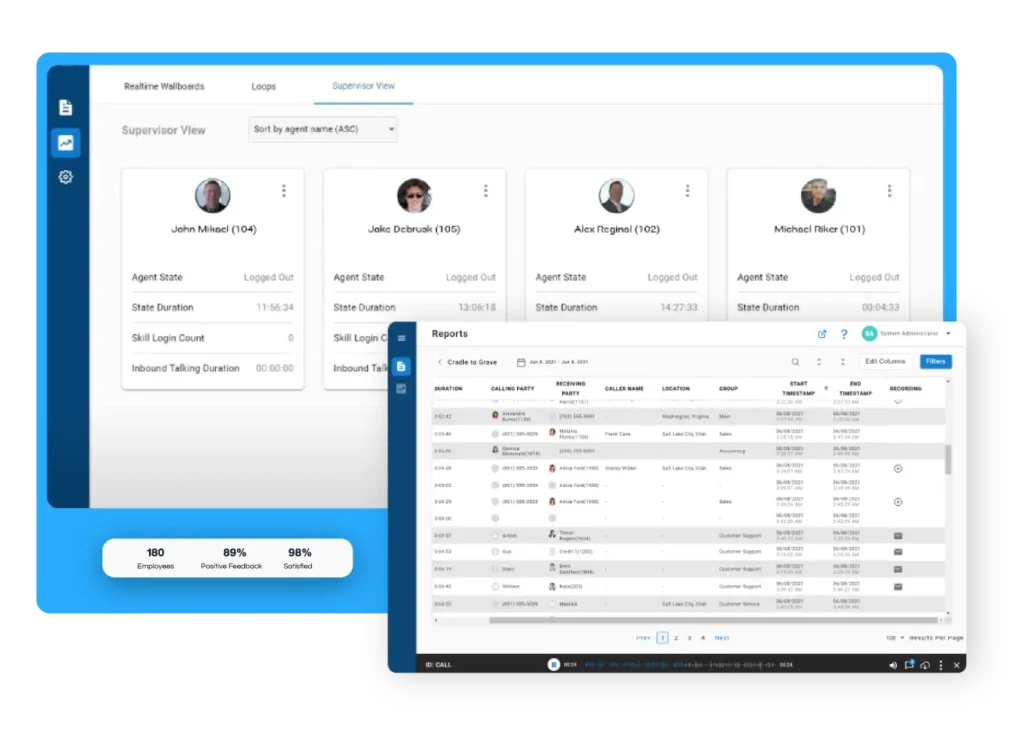Healthcare organizations don’t lack data. They lack clarity.
Whether it’s coordinating patient access, managing support teams, or responding to shifting demand, the biggest challenge isn’t collecting information—it’s knowing what’s actually happening and how to respond. That’s why reporting isn’t just a compliance checkbox. It’s a foundational part of running an effective healthcare operation.
But for too many teams, reporting still means pulling static spreadsheets, waiting for outdated summaries, or toggling between disconnected tools. The result? Blind spots in service performance, missed patterns in demand, and decisions based on assumptions, not evidence.
That’s where modern, connected reporting makes a difference. It turns operational data into day-to-day visibility—and long-term confidence.
Why Reporting Is a Strategic Lever
Every patient interaction depends on the systems behind the scenes: appointment scheduling, billing support, call handling, and administrative coordination. When those systems falter—even slightly—patient experience suffers.
Reporting helps operational leaders:
- See performance issues before they escalate
- Identify gaps in service delivery or staff availability
- Understand how each team, queue, or agent is performing
- Allocate resources based on what’s actually happening—not what’s assumed
With the right reporting structure, healthcare teams don’t just react faster—they plan better. And over time, that consistency improves the patient journey.
The Value of Real-Time, Role-Based Reporting
Xima’s reporting platform is designed to help teams cut through the noise. It delivers the specific, timely insights operational leaders need to take action, not just track metrics.
That includes visibility into:
- Which call queues are most overloaded
- Where calls are being transferred—or dropped
- How long patients are waiting to reach the right team
- Which agents are consistently handling high volumes or escalations
This level of visibility supports smarter decisions—whether it’s adjusting staffing, improving workflows, or guiding coaching conversations.
And as pressure on support teams continues to grow, the ability to see and act on operational trends in the moment is becoming a core competency.
Where Healthcare Teams See the Most Impact
From our work with healthcare organizations, here are the most common areas where real-time reporting drives improvement:
1. Contact Centers and Patient Access Lines
Missed calls, long wait times, and bottlenecks in routing don’t just frustrate patients—they impact revenue and retention. Clear reporting helps teams allocate staff where it’s needed most and track follow-through on first-call resolution.
2. Revenue Cycle Support
Billing questions and benefits issues generate complex call traffic. Reporting highlights where calls get stuck, when escalations happen, and how quickly teams respond—so operational leaders can streamline processes without sacrificing accuracy.
3. Scheduling and Front Desk Operations
Tracking no-shows, appointment volumes, and call-in trends helps reduce friction and improve access. According to MGMA, 33% of practices reported increased no-show rates in the past year—often tied to gaps in communication.
🔗 Source
Real-World Example: Privia Medical Group
Privia Medical Group, a multi-specialty provider organization, partnered with Xima to centralize and improve their reporting across distributed call centers.
With Xima, they gained:
- A single view of call volume, team activity, and queue performance
- Speech analytics to support quality monitoring and training
- Real-time tracking of agent performance metrics
- Tools to guide resourcing and coaching decisions based on actual demand
This helped them create consistency across regions, improve patient service, and reduce reliance on manual reporting workflows.
What to Consider When Building Your Reporting Strategy
Reporting is only useful if it supports action. That means focusing on:
- Data integration: Bringing together call systems, scheduling, and ticketing platforms
- Role-specific views: Giving each team access to the metrics that matter most
- Privacy and compliance: Ensuring HIPAA alignment and secure access
- Clarity over complexity: Prioritizing usability so reports can be used daily—not just quarterly
The most successful teams start small—solving one visibility issue—then expand as insights drive results.
Final Thoughts
Operational challenges don’t come from a lack of effort. They come from a lack of visibility.
Reporting gives healthcare organizations the ability to step back, understand what’s really happening, and act with confidence. Over time, that visibility becomes a strategic asset—supporting better performance, more consistent patient experiences, and stronger operational outcomes.
But insight alone isn’t enough. Data is only as useful as the people—and plans—that act on it. To drive real change, reporting should be paired with a strategy that empowers teams to take action. That means building processes, training, and accountability around the insights surfaced by reporting tools.
When reporting becomes part of a broader improvement plan—not just a measurement exercise—it helps customer service teams deliver a better experience, support clinical operations, and ultimately improve healthcare delivery.



